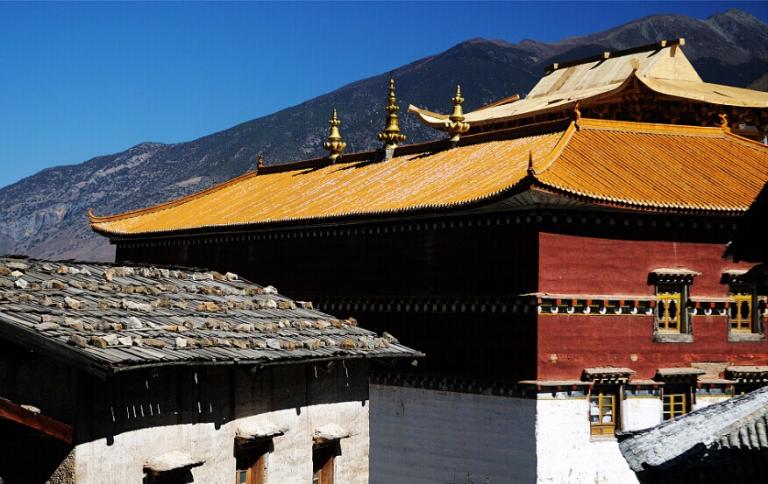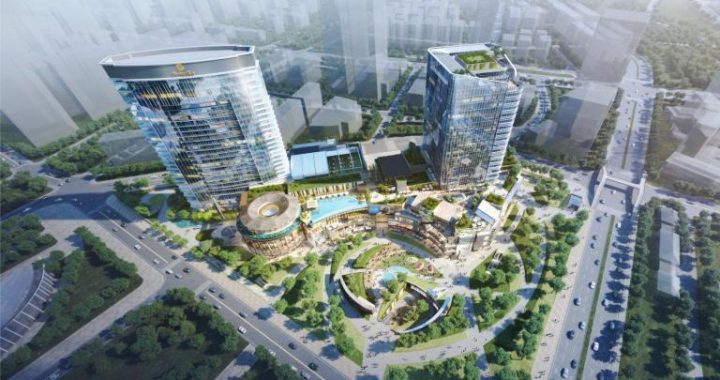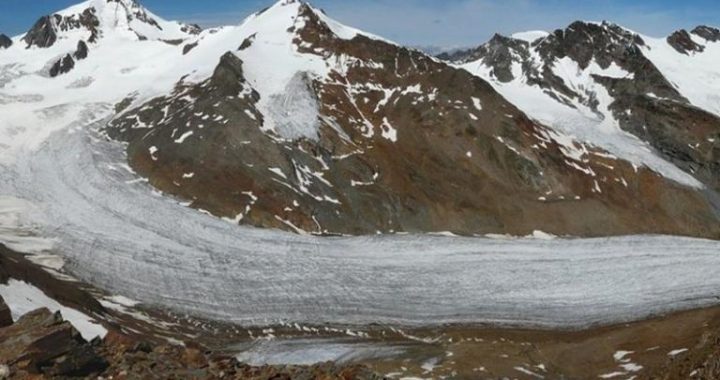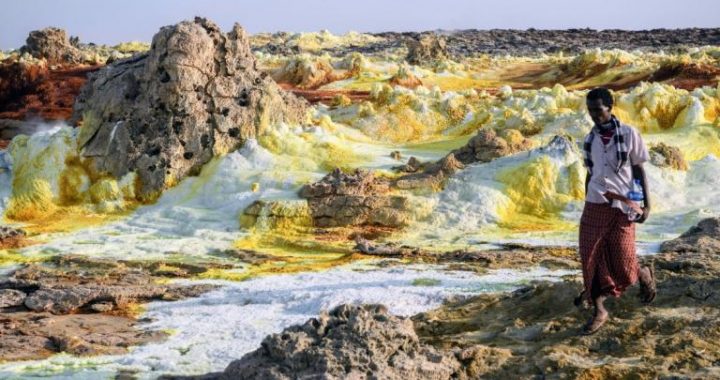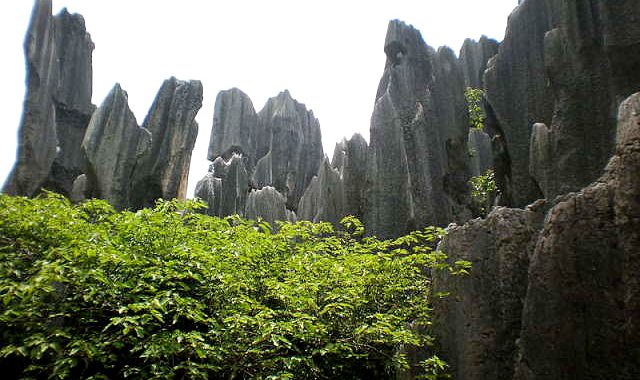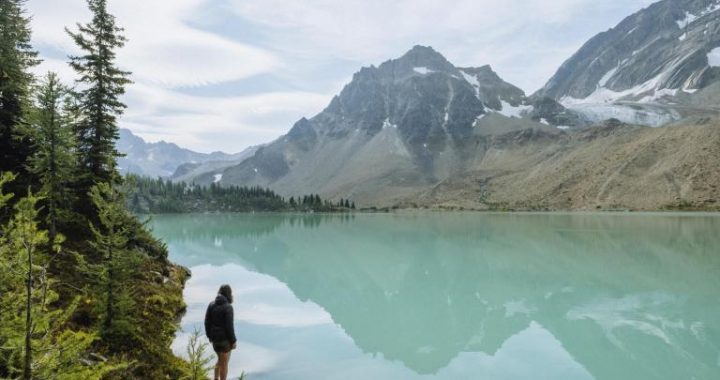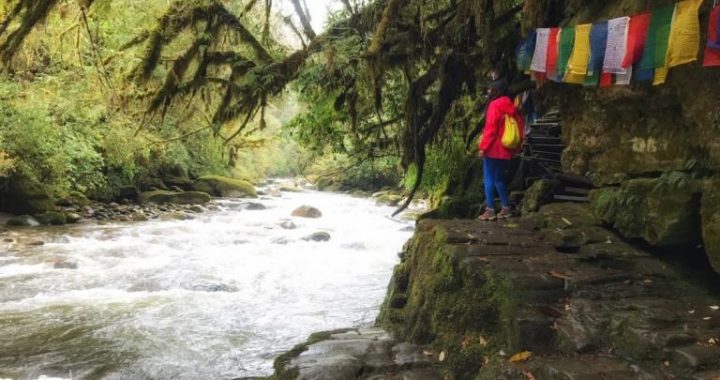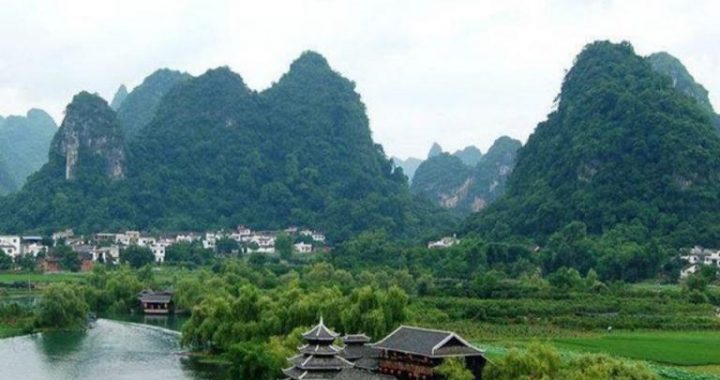Religious sites in Shangri-La Deqin County
3 min readDeqin Monastery, Deqin County
The next three photo sequences are of the Deqin Monastery illustrating its dynamic history over the past century.I’ ll use this overview of Deqin taken by Joseph Rock to introduce the complicated story. The Deqin Monastery, the Monastery of Great Happiness, was founded many centuries ago as a religious center for the Kagyupa school of Tibetan Buddhism and later the Gelugpa school, as it ascended to doctrinal supremacy across Tibet in the 1600s. The original monastery was located in the valley on the edge of Deqin town. This original location is labeled”A”in Rock’s photograph, and a close-up of this site is seen in the next photo sequence. This monastery was destroyed in 1905 by Qing Army troops as punishment for the murder of Catholic priests and the burning of their missions in the Lancang and Nu valleys. It was then rebuilt in 1907 on the ridge above Deqin. This is the monastery visible at the right edge of Rock’s photo and labeled”B.”This ridgeline monastery was then destroyed in the 1960’s during the Cultural Revolution. Farmers moved into the area vacated by the monks and created the village of Gusong. In Tibetan Buddhism the monastic and lay communities must remain separate, so Deqin Monastery could not be rebuiltat the old site when policies changed in the 1980s. The new monastery was instead rebuilt down valley from Deqin and is visible as a cluster of white buildings near the center of the 2001 photo, where it is labeled “C.”But this site was considered to be spiritually lacking and never prospered. In the early2000s the monks abandoned it, moved back up to the ridge location, and began rebuilding that site, which we will see later.The abandoned 1980-1990s monastery is now an orphanage and Tibetan language school.
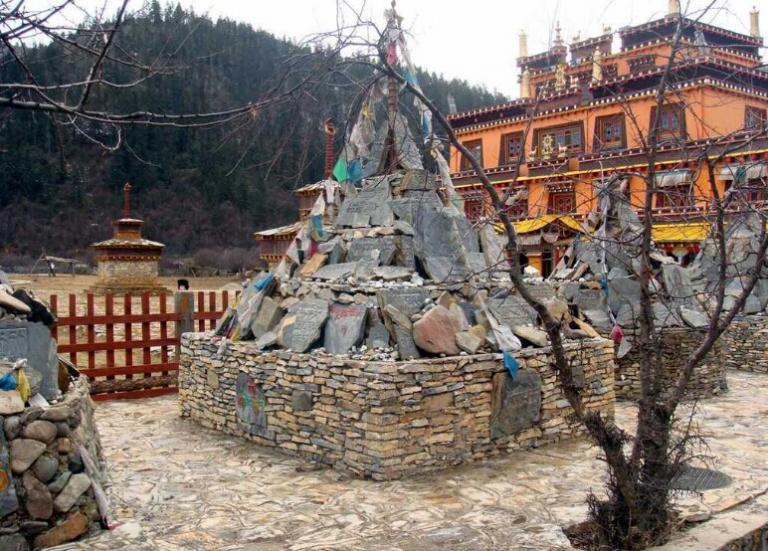
Deqin Monastery, Deqin County
This repeat photo pair was taken at position A in the previous photo set. The ruins of Deqin Monastery fill the bottom half of the 1911 photo, while the buildings along Deqin’s main street extend up the valley behind it.Kingdon-Ward took this photo just six years after the monastery had beendestroyed by Chinese troops as retribution for monastic armies murderingpriests and destroying Catholic missions throughout the region, including at Ciku and Baihanluo. The severed head of Father Dubernard, vicar at Ciku, was brought up river and placed on display at the monastery gate, as was customary with”criminal”executions throughout China at the time.Kingdon-Ward returned to Deqin on a 1922 expedition and found that the monastery ruins had been cleaned up and turned into a parade ground for the small Chinese army unit stationed there.
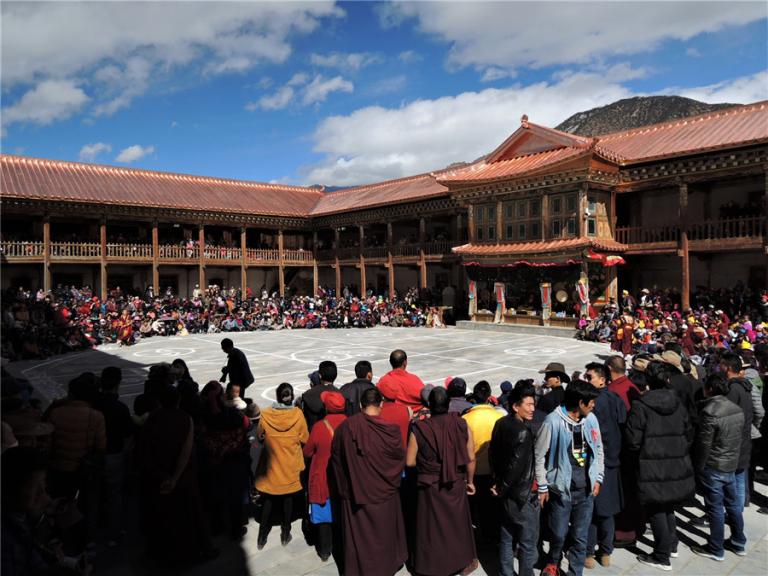
Deqin Monastery, Deqin County
When Joseph Rock took his photograph of the main hall, the Deqin monastic complex consisted of 30 buildings and about 200 monks. After the original was destroyed two years earlier, this new monastery was rebuilt here in 1907,a strategic ridgeline location overlooking town and easy to defend.But this new complex was destroyed and abandoned during the Cultural Revolution of the 1960s, although, as we see in the modern photos, the buildings were not fully demolished. They stood in a ruined state until about2000, when it was decided to rebuild a new monastery at this site.In the years between the Cultural Revolution and 2000, the village ofGusong had sprung up among the ruins. In fact,a house, just visible on the left edge of the modern photos, prevented us from reoccupying Rock’sexact position in the courtyard of the main monastic hall. Because secular and religious communities cannot share the same ground, Gusong must eventually move. Villagers support rebuilding the monastery and will move their village without argument if properly compensated.Gusong villagers never tore down any of the old rammed-earth walls, which later became the starting point for reconstruction. The 2001-2005photo series shows reconstruction of the main hall. Progress was slow, although a new house for Deqin’s Living Buddha was completed by 2003. Volunteers from villages up and down the Lancang Valley are providing labor, but they are only available for short periods, usually during the winter when they are not farming or herding on alpine pastures.
